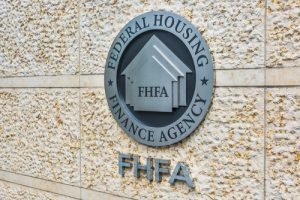 The Federal Housing Finance Agency (FHFA) recently released its 2021 Scorecard, outlining specific conservatorship priorities for Fannie Mae and Freddie Mac (the government-sponsored enterprises or GSEs), and their joint venture, Common Securitization Solutions LLC (CSS).
The Federal Housing Finance Agency (FHFA) recently released its 2021 Scorecard, outlining specific conservatorship priorities for Fannie Mae and Freddie Mac (the government-sponsored enterprises or GSEs), and their joint venture, Common Securitization Solutions LLC (CSS).
The 2021 version of the Scorecard was the 10th such installment, a tool originally developed in 2012 by FHFA Acting Director Edward DeMarco to give the GSEs—who have been in conservatorship since September 2008—specific policy direction in providing transparency to the mortgage industry and policy community. It was also meant to show transparency to the American taxpayers, who are financially supporting the companies, what was being done with their tax dollars.
The three primary objectives of the 2021 Scorecard are to ensure the GSEs continue to:
- Focus on their core mission responsibilities to foster competitive, liquid, efficient, and resilient (CLEAR) national housing finance markets that support sustainable homeownership and affordable rental housing;
- Operate in a safe and sound manner appropriate for entities in conservatorship; and
- Prepare for their eventual exits from the conservatorships.
Don Layton, Senior Industry Fellow for Harvard University's Joint Center for Housing Studies and former CEO of Freddie Mac (from May 2012-June 2019), has authored The Many Flaws and Weaknesses of FHFA’s 2021 GSE Scorecard: A Hollowed-Out Document, arguing that the 36 specific stated goals of the 2021 Scorecard are riddled with problems.
“Not every one of the 36 goals is problematic, but enough are so that the document is quite weak. At times, the Scorecard appears to engage in signaling about ideology rather than providing implementable direction for the GSEs,” said Layton. “Furthermore, the criteria for its goals are entirely qualitative and judgmental, never quantitative; this absence of quantitative criteria further erodes the scorecard’s transparency. Taken together, these weaknesses greatly decrease the Scorecard’s value as a communications vehicle: it conveys less content with less value, and it does so less transparently.”
Layton notes that the intent of the FHFA’s Scorecards from day one was to bring clarity to the public in terms of its conservatorship. However, he feels it has done nothing of the sort.
“The concept of the scorecard, going back to its first appearance in 2012, is to provide transparency to the activities of the FHFA as conservator of the two GSEs,” said Layton in his paper. “The Scorecard should therefore clearly explain what the GSEs must do as they seek to meet the Scorecard’s stated goals. Unfortunately, the 2021 Scorecard fails to provide that clarity, leaving even the most knowledgeable reader unsure of what is being proposed. In other words, the Scorecard is sometimes worded so unclearly that one can’t figure out what it really means, leaving the FHFA with a blank check of sorts.”
Layton found the “flaws and weaknesses of the 2021 GSE Scorecard rather extensive,” but came to three main conclusions:
- The Scorecard’s value has diminished dramatically from 2012-2019 (the years Acting Director DeMarco and Director Mel Watt led the FHFA), describing fewer goals with less specificity, and duplicating already-known requirements.
- The 2021 Scorecard uses some key “ideological virtue signaling,” verbiage not suited for a document from an independent regulator.
- The FHFA seems to care little for the Scorecard and its value as a means of communication with the public that, as Layton states “one wonders why it bothered to produce one at all.”
Layton commented: “We now have a hollowed-out GSE Scorecard, with little value to the public.”
Click here to view the report, The Many Flaws and Weaknesses of FHFA’s 2021 GSE Scorecard: A Hollowed-Out Document.

 DSNews The homepage of the servicing industry
DSNews The homepage of the servicing industry









